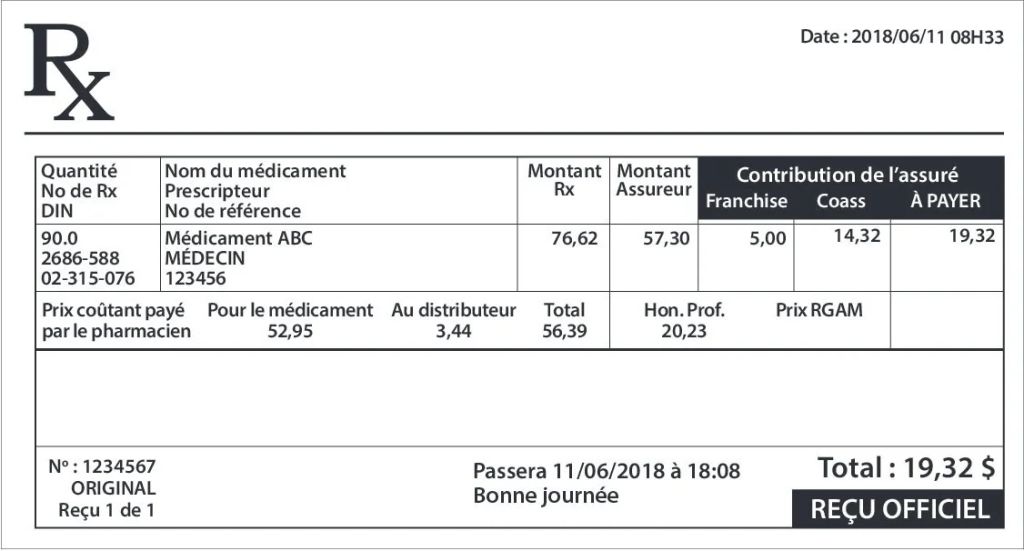Resident of Quebec – Understand your Prescription Drug Receipts
Ever wonder what the information on your pharmacy prescription drug receipt means or how you can have an impact on your prescription costs?
Some of the information on the receipt is self-explanatory – such as pharmacy details, the prescriber names (doctor) and the name of the drug. However some of the other items may need to be better explained.
Pharmacist’s receipts must provide you with an itemized receipt that includes three distinct components of the total cost of each prescription drug. These include:
- The cost price of the medication paid by the pharmacists
- The wholesalers fee is the extra amount charged to distributor when selling the drug to the pharmacy
- The pharmacists professional fees and this includes dispensing fee, operating expenses, preparation and verification of the medication, and/or other fees charged by the pharmacists
Also included on the receipts are:
- DIN: Refers to the Drug Identification Number. This number uniquely identifies all drug products in Canada.
- RGAM Price: it is equal to the price payable by the RAMQ for the drugs included on the RAMQ list and does not include professional fees and applies only to the cost of the medication and the amount paid to the distributor.
- Insurer Amount: the amount payable for your prescription is determined by your insurer, based on your plan’s coverage.
- Contributions of the Insured: This is the amount not covered, or refused by your insurer. This is the amount you must pay.

By asking your doctor to prescribe a generic drug instead of the brand version which costs more, and by choosing a pharmacy that offers lower dispensing fees, you can help to reduce costs not covered by your group health plan.


